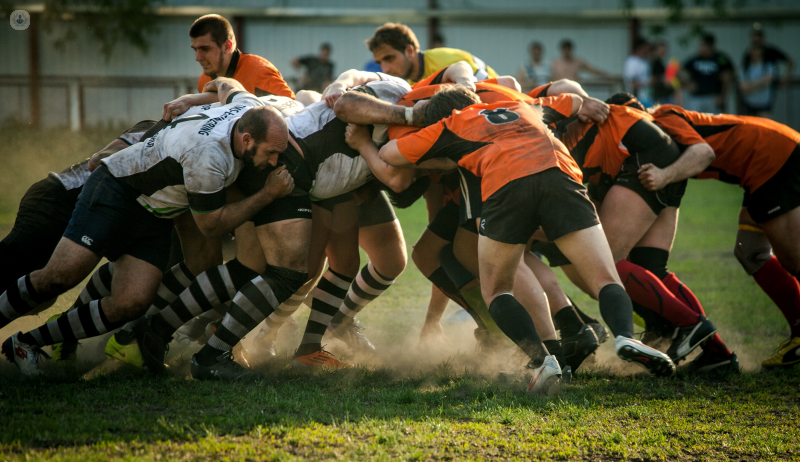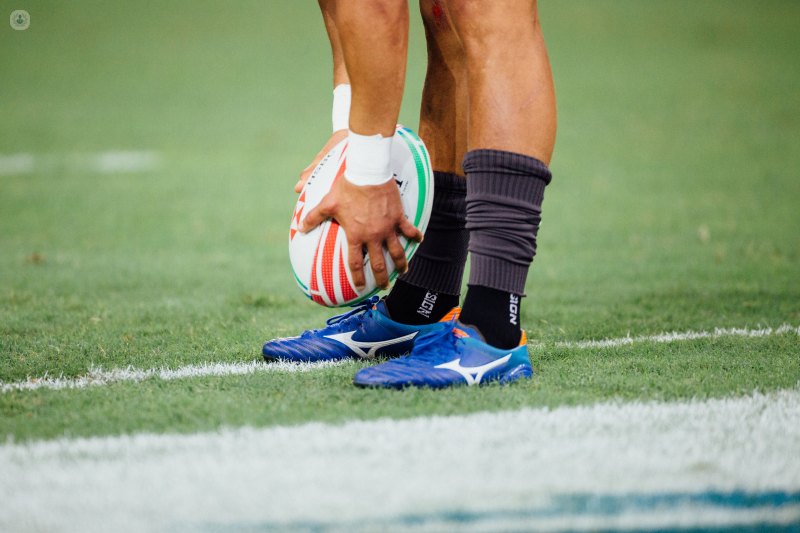Common rugby injuries
Autore:Rugby is a highly physical and demanding team sport where injuries are almost certain to occur. When a player does get injured, it’s very important that they find appropriate professional help to minimise any long term damage from the injury that could affect their ability to play in the future. Mr. Jamie Arbuthnot is a highly-experience consultant orthopaedic surgeon and treats leading rugby players at his specialist practice in Birmingham. He tells us what the most common injuries are and how they might be treated.


Where do most injuries occur?
In amateur rugby, injuries normally happen at a rate of 47 per 1000 player hours. This works out at around two injuries per game. The average injury rates are reported to be around three times higher than football.
The commonest site of injury is the knee, followed by the thigh, ankle, shoulder, back and neck. Most injuries arise during the tackle with the tackler being more at risk. Usually, the forwards are at a higher risk of injury than the backs.
Sprained ankles, dislocations and fractures are also common injuries that occur during the game.
How are rugby injuries treated?
Most of the knee injuries are ligament strains. This is a type of soft tissue injury in which partial tears occur in the muscle fibre. These can often be treated effectively by physiotherapy after quick and accurate diagnosis.
It’s not uncommon to experience pain for some weeks, or even months following this kind of injury. Sometimes, the ligament is more comprehensively damaged and this requires bracing or occasionally, surgery. If the ligament isn’t able to heal, it may need to be reconstructed.
At the clinic, I carry out many anterior cruciate ligament reconstructions. Anterior cruciate ligament damage is a very common injury. This ligament is an important structure in the centre of the knee which keeps the knee stable, predominantly when twisting or changing direction. It is often damaged when a player turns suddenly and catches their studs in the grass. It can also be injured during contact situations such as tackles.


When can players return to sport following an injury?
This is the most important issues that affects a player: when and whether they can return to sport.
Following this type of injury, the player should have a speedy and accurate diagnosis. If necessary, prompt surgery might be carried out. A delay in either can result in an increased risk of the player either not returning to play soon, or not returning to play at all.
A physiotherapist will evaluate when it’s the right time to return to training. There are certain rehabilitation goals to achieve before returning to play.
Mr. Jamie Arbuthnot practices in the West Midlands as a consultant orthopaedic surgeon and knee sports injury specialist. To book an appointment with him, visit his profile here.


